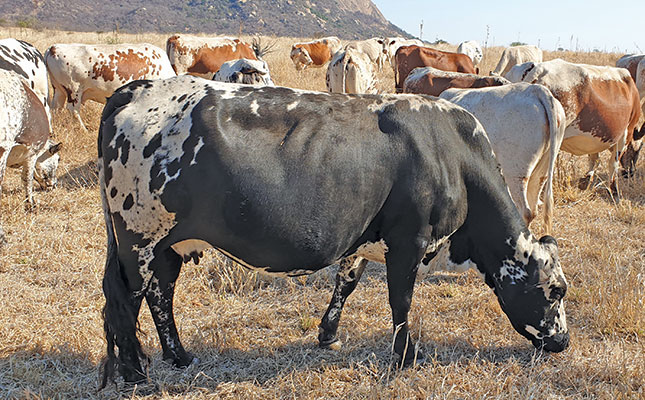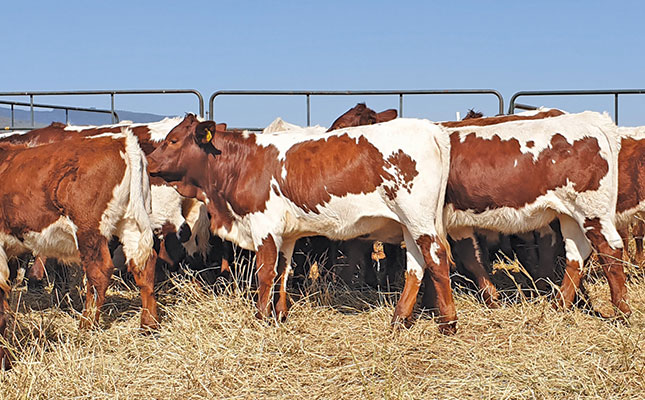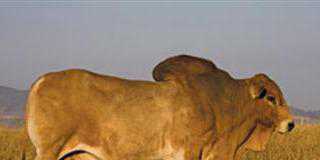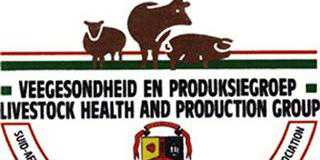
Photo: Dr Danie Odendaal
Traceability involves more than simply identifying animals and keeping track of a particular livestock unit throughout the value chain.
It entails a complete herd management system that includes the sustainable use of natural resources; a programme to ensure the health, welfare and safety of the animals and animal products produced and sold; animal recording and breeding according to genetic potential for optimal production under given environmental conditions; and sound record-keeping to prove compliance with good management practices.
I was provided with the ideal opportunity to put these guidelines into practice when asked in 2018 by Tommie van Zyl, CEO of ZZ2, to develop and implement such a comprehensive system for its beef cattle division. ZZ2 employs a systems approach to every production unit of its farming business, but its beef cattle division at the time lacked such an approach.
DOWNLOAD this article as a PDF
These systems are generally well developed in intensive animal production (pig and poultry production), but not in most extensive production units such as beef cattle production.
I worked with Fanie Potgieter, manager of ZZ2’s cattle division, and our overall goal was to ensure that this system served as a model for the entire beef industry.
Our first priority was to synchronise the 12-month production cycle of the cattle with the 12-month environmental cycle, as the start of the project coincided with the end of a severe drought in Limpopo. At the time, the herd was calving throughout the year, which made planning impossible.

Our second aim was to establish a biosecurity plan to eliminate specific diseases that could pose a health hazard for consumers (zoonoses) or buyers of live animals from the various studs that ZZ2 operates. A further challenge in this respect was the foot-and-mouth disease outbreaks in Limpopo, which threaten the various herds that are run extensively on the company’s 40 000ha.
Our third aim was to electronically tag the animals and ensure the record-keeping reflected all of the management actions taken to address the goals. The BenguFarm programme was used for this, as it could integrate the individual animal records with the biosecurity system that was developed.
Production periods
To use all natural resources optimally, a strictly controlled breeding policy must be implemented. Controlled breeding is used to ensure that cows calve within a short period for the most effective utilisation of natural grazing.
Synchronising the cows’ highest nutritional needs with the period of highest nutritional availability, together with an effective grazing plan, are the most important management goals for profitable cattle farming.
Controlled breeding also assists with implementing herd health and production management actions at specific times of the year. This entails implementing a 12-month production cycle for breeding females and other animals in the herd that is divided into four production periods, each with its own critical control points (CCPs).
Each of these, in turn, has a subset of management actions pertaining to it that must be executed and recorded according to a checklist.
There are four production periods within the production cycle, each with a number of CCPs:
Period 1: Calving and preparation for breeding: The CCPs include monitoring and managing cows before and during calving and the survival of newborn and young calves, as well as testing and preparing bulls and cows for the new breeding season.
Period 2: Breeding and pre-weaning calf growth: The CCPs are the management of bulls and cows during the breeding season, vaccination of calves, and management of optimal growth in calves during the pre-weaning period.
Period 3: Weaning of calves and pregnancy diagnosis: The CCPs are shown in the table below.
Period 4: Dry-cow management and preparation for calving: The CCPs, namely dry-cow management and preparation for calving, include putting in place the programme for oxen to be grown out on grazing, implementing the replacement heifer programme, preparing cows for calving, and marketing animals to be culled.
Weaning of calves and pregnancy diagnosis (production period 3) |
||
| Critical control points | Production goals – weaning | |
| 3.1 | End of breeding season | Remove bulls to limit breeding to three months. |
| 3.2 | Management of the last part of lactation | Management of the last part of lactation |
| 3.3 | Pregnancy diagnosis and condition score | The target pregnancy percentage for all breeding groups is 85% and higher. |
| 3.4 | Selection of replacements | Select heifer and bull calves that have shown good growth pre- weaning to be kept as replacement heifers. |
| 3.5 | Weaning of calves | Reduce weight losses after weaning to a maximum of 5% of body weight. |
| 3.6 | Marketing of weaner calves and cull animals | Prepare a detailed list and photographs of weaner calves and cull animals to be sold on the veterinarian-verified electronic auction. |
| 3.7 | Plan grazing (dry season) | Plan and allocate existing grazing to each management group of animals. |
| 3.8 | Budget and plan for the next year | Finalise the 12-month budget (all expenses and income) and herd health and production management plan for implementation at the start of July. |
Health and safety
When implementing a livestock identification and traceability system, it is crucial to have specific outcomes in mind. Selling healthy animals is the most important aspect of the system.
In this regard, for the management plan that we developed for ZZ2’s beef cattle division, it was essential to ensure that diseases such as bovine brucellosis and venereal diseases were eradicated from the herd and that the animals were tested and declared disease-free by a veterinarian.
With the challenge of foot-and-mouth disease, it was also essential to implement a daily observation card, which was used to record the first signs of such a disease, but also served to identify other diseases at an early stage.
This system was previously developed by me for use in small-scale farming units, but was implemented in its full context at ZZ2 with in-depth training and retraining of 52 cattle handlers and managers.
Genetic potential
There are a number of specific environmental limitations in Limpopo. These include seasonal or annual droughts that affect grazing availability; high to extremely high summer temperatures, which affect animal productivity; and a high prevalence of ticks and tick-borne disease, which can cause mortality and production losses.
For these reasons, the cattle breed also had to be adapted. This was done using the principle followed throughout all ZZ2 farming systems, namely to farm with nature as the guide.
Over a number of years, ZZ2 developed a unique breed of cattle, the PinZ2yl, which is a combination of the best of both worlds. The breed consists of 50% Pinzgauer genetics, a long, large-framed, fast-growing European breed, crossed with 50% Nguni for optimal adaptation to the regional environmental challenges.
Good records to prove compliance
It takes much time and effort to put in place all the components of good management practices, such as natural resource management and a biosecurity and herd health management. To be worth it, these actions must benefit the farming enterprise.
In this case, the implementation of an animal identification and traceability system should give the farmer better or differentiated access to the market or result in a price premium.
This year, ZZ2 will hold a weaner electronic auction of more than 1 000 calves, all of which will have full traceability from birth throughout the production system.
With the advent of electronic auctions, the assurance given by the traceability system based on specific records becomes very important for potential buyers, as in many cases they will not see the animals in person before buying them.
This auction will thus be a practical test of the system, and will also pose the next challenge: to follow the calves bought by individual feedlots through the next production phase, and compare their results with average calves fed at the same time.
These results will help build an animal identification and traceability system that unlocks value for all role players in the production chain.
Email Dr Danie Odendaal at [email protected].










